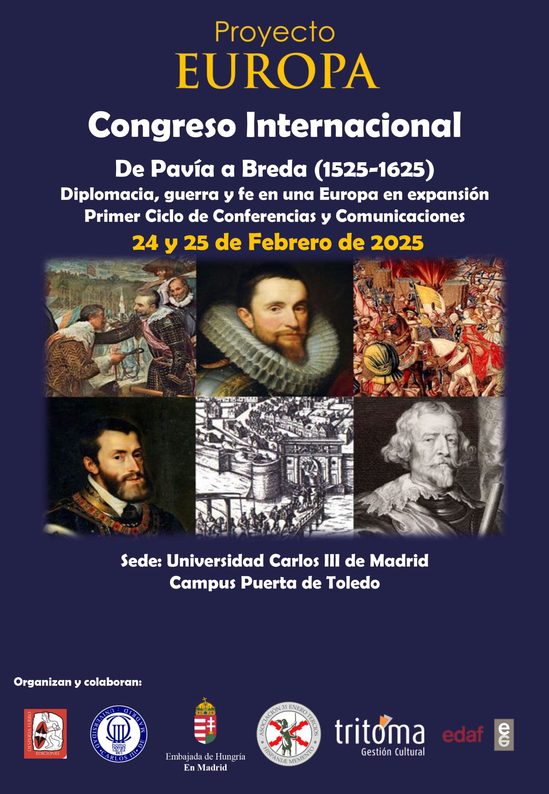The international conference on the Battles of Pavia (1525) and Breda (1625) is being held at the Universidad Carlos III in Madrid on 24-25 February, where Dr Phillip Williams shared his paper about the development of the English navy and army. This conference delves into the significant impact these confrontations had on global warfare, politics and trade. Europe was adapting to the massive changes brought about by gunpowder weaponry.

The Battle of Pavia (24 February 1525) was a decisive victory for the Spanish-Imperial or Habsburg forces over the French, leading to the capture of King Francis I of France. This battle showcased the effectiveness of new military technologies, such as the arquebus (a sort of firearm), and tactics, including the use of combined arms. The outcome of Pavia shifted the balance of power in Europe, solidifying the Habsburg dominance and influencing the political landscape for decades. Soon these new methods of war would be deployed across the world.
Similarly, the Battle of Breda in 1625 was an important turning point during the Eighty Years' War between the Dutch Republic and Spain. The Spanish forces, led by Ambrogio Spinola, successfully besieged and captured the Dutch city of Breda. This victory demonstrated the importance of siege warfare and the strategic use of fortifications. Paradoxically, it was also an indication of the declining power of Habsburg Spain, as Madrid was unable to follow up this victory and became increasingly marginalised in European and world affairs.
The conference highlights how these battles demonstrate the evolving nature of warfare in this period and how Europe acquired the military technology that it would deploy across the rest of the world. The use of gunpowder weapons, the development of professional standing armies, and the increasing importance of logistics and fortifications were all pivotal in shaping the conduct of war. These changes had far-reaching consequences, influencing military strategies and tactics globally.
“The discussions draw together experts from across Europe and America and showcase the latest research. My paper is about the development of the English navy and army. Rather than focus on new elements, I stress the importance of old themes: England had lost its territories in France (in the Hundred Years War, ending in 1453) and suffered further losses in 1549 and 1558. London’s resources were very limited and I argue that the new technology was not quickly adopted by the Tudor state. Sail-driven warship with light hulls emerged not because of the new technology but because of the difficulty of navigation.”






